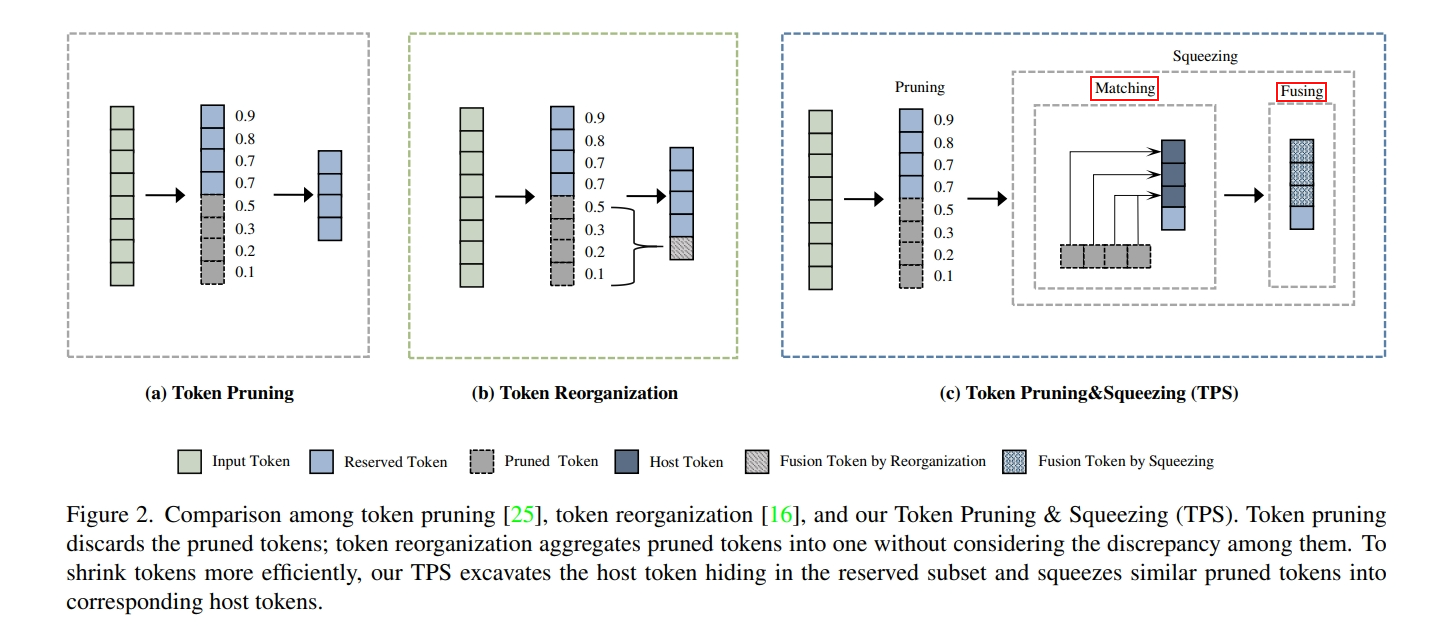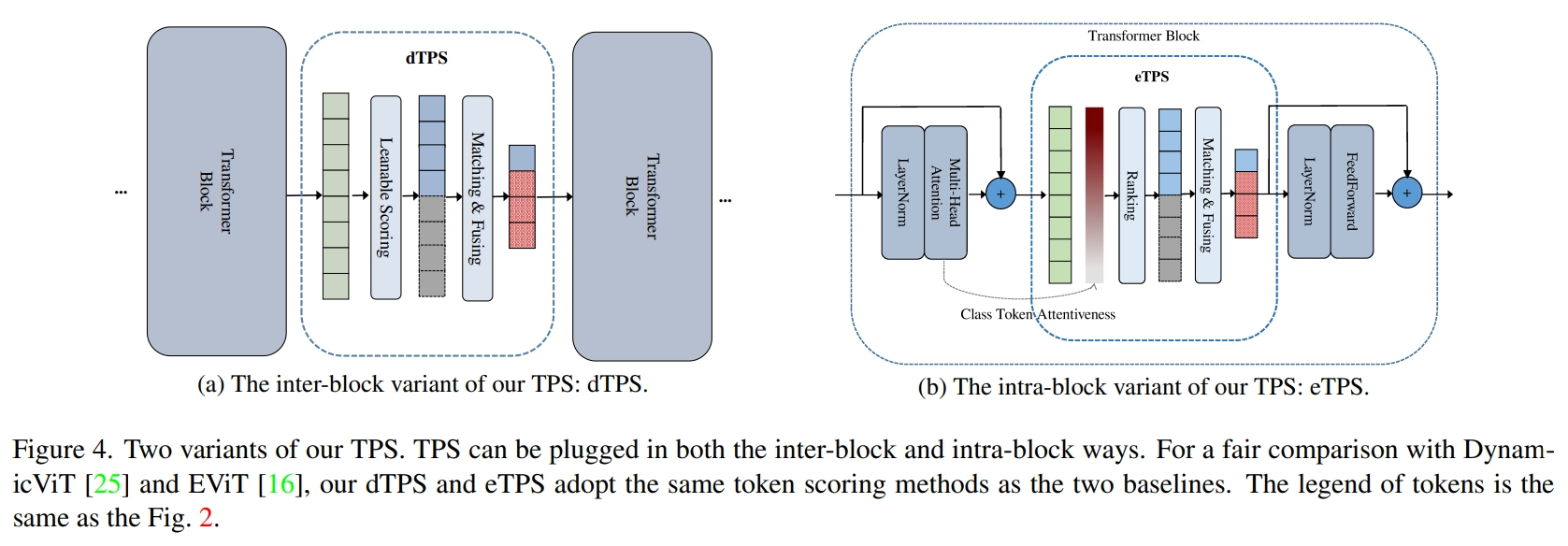Joint Token Pruning and Squeezing Towards More Aggressive Compression of Vision Transformers
Abstract
Our quantitative experiments reveal that the impact of pruned tokens on performance should be noticeable.
To address this issue, we propose a novel joint Token Pruning & Squeezing module (TPS) for compressing vision transformers with higher efficiency.
Firstly, TPS adopts pruning to get the reserved and pruned subsets.
Secondly, TPS squeezes the information of pruned tokens into partial reserved tokens via the unidirectional nearest-neighbor matching and similarity-based fusing steps.

Method
Motivation
The exclusive information from pruned tokens matters more while the token pruning intensity grows.
Token Pruning
Here, we introduce two variants of TPS: dTPS and eTPS, to cover both intra-block and inter-block token compression.

dTPS adopts the learnable token score prediction head from dynamicViT [25] and samples the binary decision mask by Straight-Through Gumbel-Softmax [12] for differentiability;
eTPS utilizes the class token attention values to measure tokens’ importance as EViT [16].
The tokens are separated into two subsets, S r and S p , where the reserved tokens are placed in S r and the pruned ones are placed in S p.
Token Squeezing
Considering that the reserved ones contribute the majority of correct predictions, we aim to design a procedure that retains most of the attentive tokens while compressing information from the rest, preserving the model’s overall performance.
matching and fusing
Given the two subsets S r and S p , I r and I p are the corresponding token indices of S r and S p . A similarity matrix ci,j for all i ∈ I p and j ∈ I r represents the interactions between the tokens for matching.
For each pruned token xi ∈ S p , we find its nearest token x^ host _∗ ∈ S r from the reserved token set S r as its host token:
We then record the matching results in a mask matrix M ∈ R ^{Np×Nr}
The similarity matrix is defined as:
Fusing.
Simply averaging tokens can lead to feature dispersion because of discrepancies among the different tokens.
As previously mentioned, the fusing step encompasses all tokens from two subsets and is controlled by the mask M to ensure that only host tokens and pruned tokens are mixed.
Specifically, the reserved token xj is updated by fusing the original feature and pruned tokens’ features as follows:
The fusing weight wi depends on the mask value m_{i,j} and similarity ci,j :